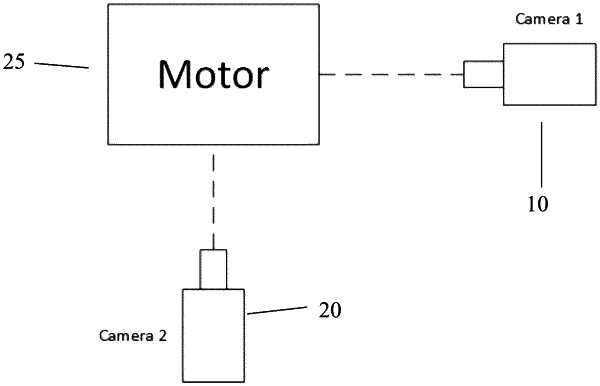| CPC G06T 7/292 (2017.01) [G01N 29/44 (2013.01); G06T 7/215 (2017.01); G06T 7/285 (2017.01); G06T 7/55 (2017.01); G06T 7/70 (2017.01); G06T 11/001 (2013.01); H04N 1/62 (2013.01); H04N 13/204 (2018.05); H04N 23/6811 (2023.01); H04N 23/80 (2023.01); H04N 23/90 (2023.01); G01N 2291/028 (2013.01); G06T 2200/24 (2013.01); G06T 2207/10016 (2013.01); G06T 2207/30164 (2013.01); G06T 2210/62 (2013.01)] | 10 Claims |

|
1. A motion evaluation method for evaluating motion of an object using a plurality of video acquisition devices, wherein an output of at least one of said video acquisition devices comprises recorded video of the object as video files divisible into individual image frames, with each frame providing a static image of the object in a scene, and with each frame being divisible into a plurality of pixels, comprising:
obtaining a first video of the object located in the scene using a first video acquisition device, wherein each video generates a signal indicative of an intensity of at least one pixel contained in at least one frame, wherein the intensity of the at least one pixel varies with the motion of the object;
obtaining a second video of the object using a second video acquisition device;
selecting a first location on the object and obtaining a position of the first location relative to the second video acquisition device, and selecting at least a second location on the object and obtaining a position of at least the second location relative to the second video acquisition device;
determining distance information from the second video acquisition device to each selected location on the object and calculating a difference in distance between at least the position of the first selected location on the object and the position of the second selected location on the object based on said distance information;
receiving by the first video acquisition device at least one of the distance information determined by the second video acquisition device or the calculated difference in distance between the first selected location on the object and the second selected location on the object; and
modifying the first video obtained with the first video acquisition device by adjusting for the difference in distance between the first selected location on the object and the second selected location on the object.
|